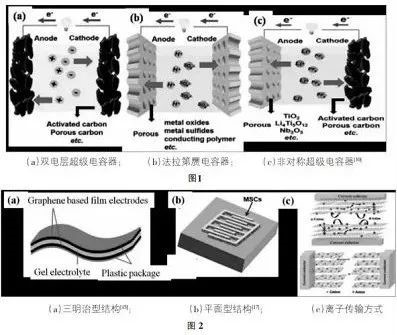With the rapid development of portable and wearable intelligent electronic products, the requirements for energy storage devices are higher and higher. But traditional super capacitors are difficult to meet the requirements. Flexible super capacitors have become a new generation of energy storage devices with great potential because of their portability, flexibility and good cycle stability. In this paper, the research progress of super capacitor based on carbon fiber in flexible super capacitor is introduced. The existing problems of flexible super capacitor are summarized and the prospect is put forward.
Electrode material is the key to determine the performance of supercapacitor. It is difficult to consider the flexibility and high energy density of active electrode. Carbon materials are superior to other materials in terms of hardness, optical properties, heat resistance and conductivity, so they are suitable as the basic electrode materials of flexible supercapacitors. Among them, carbon fiber has good conductivity, thermal conductivity, and excellent chemical stability, which has attracted extensive attention of researchers. Through different structure design, the electrode, electrolyte and flexible substrate can be better combined. It not only can ensure the flexibility but also can improve the energy storage of flexible super capacitor.

Carbon fiber is a new type of fiber material with more than 95% carbon content. It has strong corrosion resistance, lighter weight than aluminum, higher strength than steel, and has the characteristics of soft outside and rigid inside compared with traditional glass fiber. Fiber like carbon materials, such as carbon cloth and nanofiber paper, have good electrical conductivity and flexibility, and are often used to prepare electrodes for flexible super capacitors. Fiber like super capacitor has the disadvantage of low energy density, which often limits its application, carbon fiber as electrode material is also included.
In order to improve the energy density, two methods can be used: working potential window and maximizing specific capacitance. The conductivity can be improved by using organic electrolyte or ionic electrolyte, and the potential window can be effectively improved by assembling asymmetric super capacitors.The work function of MnO3 is as high as 6.9eV, which can be used as positive electrode, and MnO2 with 4.4eV as negative electrode. Due to the large difference of work functions between positive and negative electrodes, the potential window voltage can be effectively increased. In order to improve the specific capacitance, we can combine with the pseudo capacitance material to produce the pseudo capacitance effect and improve the storage capacity of the electrode material. Carbon fibers are often used as flexible substrates, on which metal oxides or conductive polymers are deposited as electrode materials. The modified nitrogen doped carbon fiber cloth electrode showed excellent electrochemical performance, which provided a simple and effective way for large-scale preparation of high-performance carbon fiber electrode materials. NiCo layered double hydroxides were grown on carbon fiber cloth by electrodeposition. The electrode has a high specific capacitance of 1540F/g at a current density of 1A/g.
The key of flexible supercapacitor is the electrode with high performance and good flexibility. Carbon fiber has excellent physical and chemical properties and braidability, so it is very suitable to be used as the electrode. The problem of carbon fiber electrode is the low energy density, which can be improved by enlarging the potential window and increasing the specific capacitance. The composite of carbon fiber and different metal oxides increases the storage capacity. The conductivity can be improved by using organic and ionic electrolytes. Different metal oxides have different work functions. The potential window voltage can be expanded by assembling asymmetric supercapacitors.
In short, carbon nanomaterials such as carbon fiber have broad application prospects in flexible supercapacitors, but there are still some problems to be considered and solved:
(1) There is no unified evaluation standard for the performance of flexible supercapacitors.
(2) The overall price of carbon nanomaterials is relatively high, so it is difficult to be used in industrial production.
(3) We should continue to find new materials with excellent electrochemical performance, analyze the energy storage mechanism from the subtle, improve the existing materials, and improve the structure of supercapacitors according to the different applications.
Original: https://www.cnki.net/
Translated by: Shanghai Green Tech. Co., Ltd.













